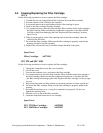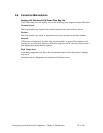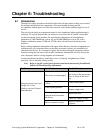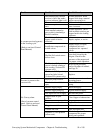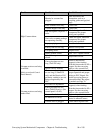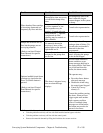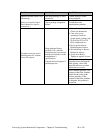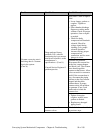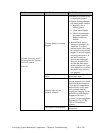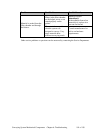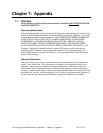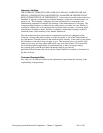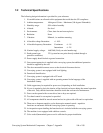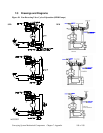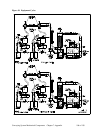
Conveying System Mechanical Components Chapter 6: Troubleshooting 100 of 138
Problem Possible Cause Possible Remedy
Vacuum leak(s) in vacuum
hoppers.
• Replace or re-install worn
or misaligned gaskets.
• Hopper discharge flapper
not sealing under vacuum.
1) Replace worn or
missing gasket.
2) Clean fouled flapper.
3) Check counterweight
for proper operation.
Repair or adjust as
needed.
• Internal check valves
missing or damaged. On
single line Y systems,
internal check valves must
be installed in the vacuum
hoppers to seal all hoppers
not being conveyed to. If
the check valves are
present and undamaged,
they may be pushed too
far onto the tube stub to
permit a proper seal. Also,
if the hopper is over-filled,
the check valve may not
seal properly.
Vacuum leaks in material
lines.
Check for leaks as described
in previous steps.
Material take-offs not
properly adjusted.
Too much air and not
enough material or too much
material and not enough air.
Close takeoff compartment
material inlet, slowly open
until you hear material
surging and slugging. Close
material inlet until surging
disappears. On most
systems, a proper adjustment
generates a 6” to 10” Hg
(203 to 339 millibars)
vacuum.
Vacuum conveying rate is
declining due to a vacuum
loss in the system.
(Cont’d.)
The blower is dead-headed.
Check the blower inlet for
obstruction.



